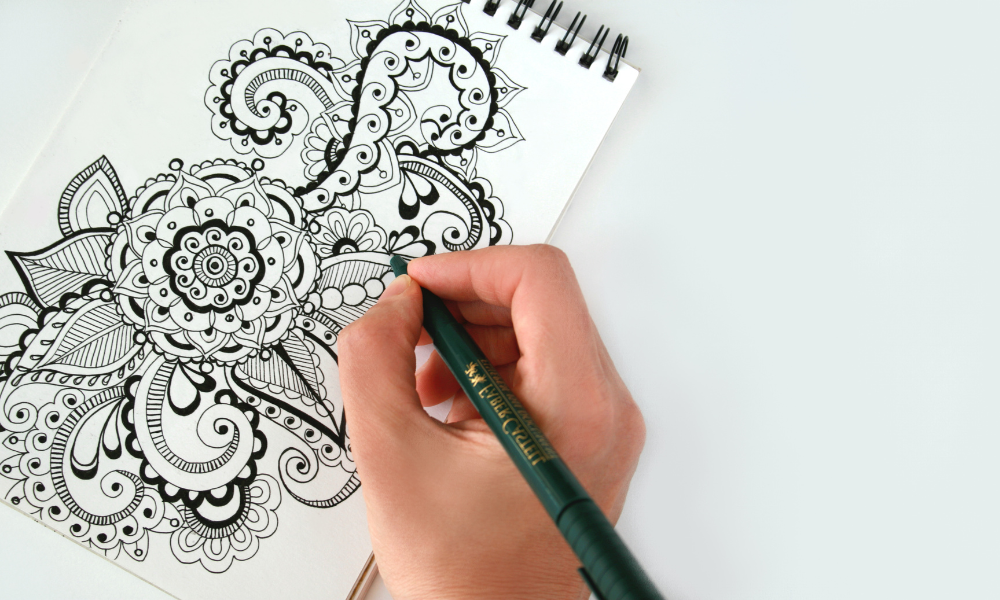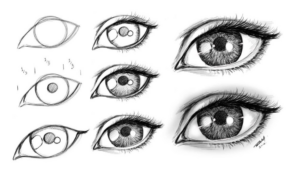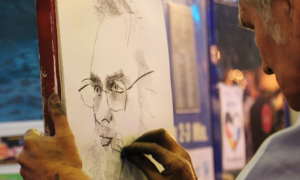Drawing is a creative form of artistic expression that conveys the thoughts, emotions, and ideas of the artist. It serves as a visual communication medium that leaves a lasting impression on the viewer. Drawing involves capturing visual objects, emotions, concepts, and imaginative elements, including symbols and abstract forms.
The term “fine art” pertains to art practiced primarily for its aesthetic value and beauty (“art for art’s sake”), rather than functional purposes. Fine art encompasses drawing and design-oriented disciplines such as painting, printmaking, and sculpture. It is often distinguished from “applied art” and “crafts,” which are traditionally viewed as utilitarian endeavors. Other forms considered fine arts include photography and architecture, though the latter is typically categorized as an applied art.
Here are some categories of drawing within the realm of fine art:
- Figurative Drawing
Many artists who specialize in human anatomy often refer to Andrew Loomis’s renowned book, “Figure Drawing for All It’s Worth,” which has been a fundamental and highly practical resource since its original publication in the 1930s. Initially intended for illustrators, Loomis’s book remains a staple on the bookshelves of artists, offering detailed guidance on proportions, skeletal structures, poses, and illustrations of perfectly proportioned figures that have been emulated by countless art students.
The term “figure drawing” typically describes the instructional class, known as life drawing, offered in numerous academies and fine art schools like the Ecole des Beaux-Arts in Paris. In these sessions, students observe and sketch live models posed in front of them.
This traditional approach to representational art is considered essential for aspiring painters and sculptors seeking to master the techniques of rendering the human form with precision in line, shape, and depth. In contrast, copying figures from photographs or memory is generally viewed as less effective by most art educators.
- Anatomy Drawing
For artists, the exploration of human anatomy can range from basic studies of proportions and life drawing to a deep dive into the intricate skeletal, muscular, and surface structures of the human body. Anatomy drawing is pursued to accurately depict the human form in different poses and postures. It often involves creating detailed anatomy drawings and sketches that serve as valuable references in the artist’s studio.
- Caricature Drawing
Caricature drawing is a form of graphic art where the likeness of a subject is intentionally exaggerated or distorted for the purpose of humor, satire, or ridicule. It typically highlights prominent features or characteristics of the subject, often substituting elements like animal features or exaggerated actions to create a humorous or satirical effect. Cartoons, a related art form, are commonly used in newspapers for political commentary and editorial opinion, as well as in magazines for social commentary and visual humor.
- Life Drawing / Still Life Drawing
Still life drawing involves creating artworks depicting inanimate objects arranged in a deliberate composition to convey meaning or evoke a visual impact. Typical subjects for still life drawings include flowers, fruits, vegetables, and various food and beverage items.
Additionally, still life drawings can feature deceased animals, such as wild game or fish, as long as they are portrayed in a non-living state within the artwork. Artists employ various mediums like charcoal, colored pencils, graphite pencils, and pastels to create still life drawings, often combining different mediums to achieve diverse artistic effects.
- Portrait Drawing
Portrait drawing captures the likeness of a specific individual, animal, or group. Traditionally, the subject of a portrait, known as a “sitter,” would sit for the artist, but today artists often work from photographs.
A successful portrait goes beyond mere visual representation; it conveys something essential about the subject’s character or essence. Effective portraits are compelling because they offer insight into the personality or story of the person depicted.
- Landscape Drawing
Landscape drawing portrays natural scenery as its main subject, including elements like mountains, forests, cliffs, trees, rivers, and valleys.
Artists depicting landscapes have the flexibility to interpret the Earth’s features in diverse ways. They may aim for realistic representation, striving to capture nature’s details faithfully. However, landscape drawing isn’t restricted to replicating specific locations.
- Perspective Drawing
Perspective drawing is a fundamental technique in art that enhances realism and spatial depth in artwork. It involves creating the illusion of three-dimensionality on a two-dimensional surface. There are two main types of perspective: linear perspective, which focuses on geometric principles to depict objects accurately, and atmospheric perspective, which uses changes in color and clarity to suggest depth and distance in a scene. Understanding perspective is crucial for artists, particularly those interested in architectural and realistic drawing.
- Doodle Drawing
You might be familiar with the term ‘doodle’. A doodle refers to a casual drawing made when someone’s attention is occupied elsewhere. These drawings are often simple and may depict recognizable objects or abstract shapes.
Doodle art can be comforting for its creator. The emotional investment in creating doodles often results in more engaging and meaningful artwork. This transforms doodling from a mere drawing exercise into a form of expression that carries both significance and individual style.
- Cartoon Drawing
Originally, a cartoon referred to a full-size preparatory drawing for artworks like paintings, tapestries, or mosaics in Renaissance studio practice. Over time, it evolved into a humorous or satirical drawing that often provides commentary on social and political issues.
Cartoons typically target a wide audience familiar with the subject matter. They serve as condensed expressions of editorial opinion, offering political satire and commentary on societal changes. Sometimes, cartoons aim to provoke thought and action, challenging social norms and encouraging progress.
- Street Drawing
Street drawing, also known as street art, refers to independent and unofficial visual art created in public spaces to be seen by the public. This art form is associated with terms like “post-graffiti,” “neo-graffiti,” and guerrilla art.
Street art encompasses artworks displayed on buildings, streets, trains, and other public surfaces. Often characterized as guerrilla art, it serves as a personal statement about the artist’s society. From its origins in graffiti and vandalism, street art has evolved into various forms where artists aim to communicate messages or simply bring beauty to a wide audience.




